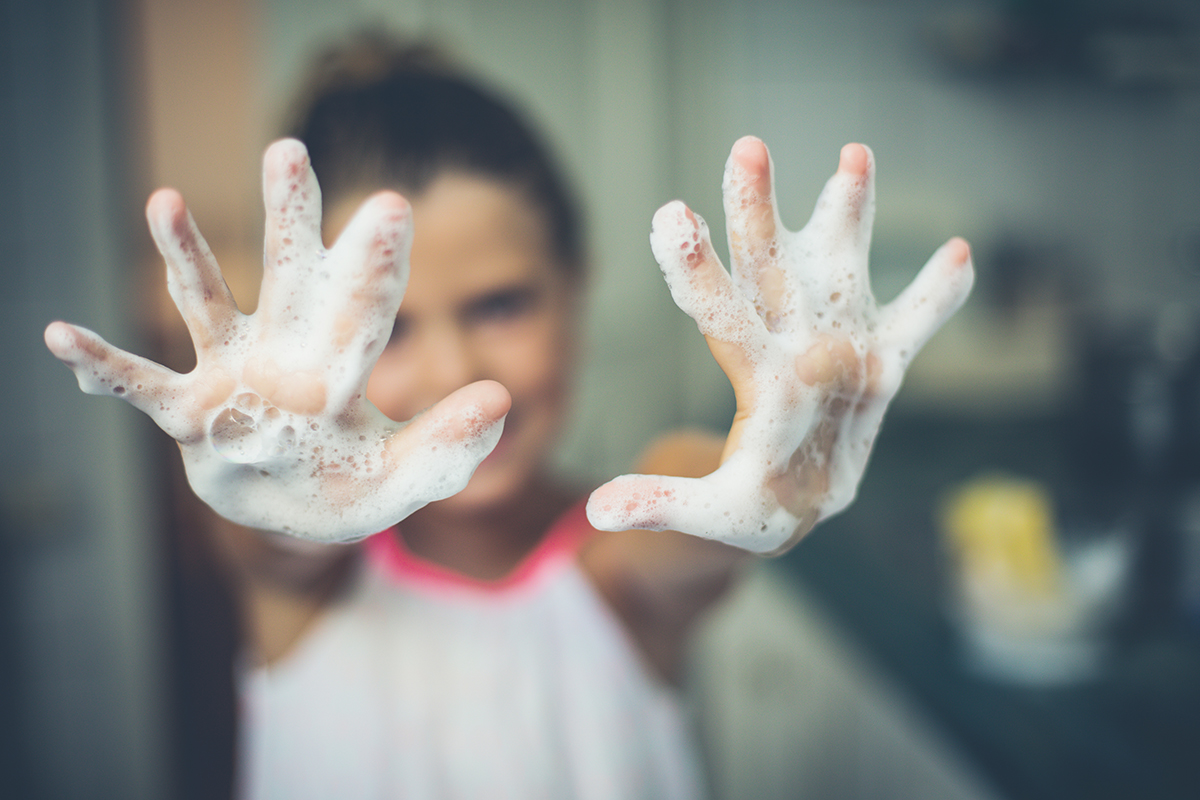
Interview with Esther Lansdaal, Senior Application Specialist Home and Personal Care, Corbion
Esther Lansdaal, Senior Application Specialist Home and Personal Care
Corbion
With the ongoing pandemic, the need for effective hand sanitization products has never been higher. How is Corbion responding to this surge in industry demand?
The ongoing COVID-19 pandemic – and recommendations from health and governmental authorities worldwide to follow public health measures, like handwashing – has heightened consumer focus on the importance of hand hygiene and general hygiene practices. Disinfectant products that provide a convenient means of sanitization when handwashing is not possible, are critical for protecting against viral threats, especially when people are ‘on-the-go’ or using public transport.
Some hand sanitizers are not as effective as they could be though, especially those with low- or zero-alcohol content. Many effective disinfectant sanitizers have high-alcohol levels (>70%) and while they are extremely successful at delivering disinfectant properties, they can be very harsh and drying for skin, especially when used frequently like they have been since the emergence of COVID-19. Corbion therefore sees an opportunity in the market for personal care solutions that can deliver on antimicrobial efficacy but are also gentle on skin.
To meet new and growing demand for disinfectant products during the COVID-19 pandemic, we’ve been investigating the effects of disinfectant hand gel and hand soap formulations – containing lactic acid – on the SARS-CoV-2 virus. The research, which was carried out by a certified laboratory, found that lactic acid-based formulations can kill coronavirus within one minute. The study concluded that lactic acid was also effective against the virus on its own. Moreover, the formulation had a moisturizing benefit and therefore meets demand for effective AND skin-friendly sanitizers. We already knew that lactic acid has an effect against a diverse range of viruses, like influenza, hepatitis B and HIV. But now we know that it is also effective against SARS-CoV-2. This is a really important breakthrough.
Most disinfectants are alcohol or ethanol based. Are there alternatives?
Many effective disinfectant hand rubs and sprays use some level of alcohol to deliver antimicrobial properties. Common hand sanitizers contain at least >60% alcohol, but this can be decreased to 40% ethanol when combined with lactic acid. Ethanol content of 40% is generally sufficient to achieve quick evaporation, but too low to provide proper disinfection of the hands on its own. Mixed with lactic acid though, 40% ethanol products are just as effective at eliminating germs as products with high alcohol content, and also have a milder effect on skin. Such a solution could nearly double the amount of hand sanitizer, as less alcohol is used. Both ethanol and lactic acid have antimicrobial properties alone, but lactic acid also helps to boost the effects of the ethanol, which is why we see this positive result. With less dependence on the use of alcohol, cost-savings can also be achieved, and manufacturers can help meet the urgent needs of the market.
Alcohol-free solutions – like water-based hand gel products – are also available, and much easier on hands. But they are not always effective against bacteria and viruses, and consumers are becoming more aware of this. As such, formulators need to find a balance between performance and gentleness on the skin. Corbion is currently experimenting with a zero-alcohol hand sanitizing formulation though…so watch this space! On the other hand, surface disinfectants can be made without using any alcohol at all, by combining lactic acid with anionic surfactants at low pH (<5). The synergy of surfactants and lactic acid means this combination has a broad spectrum of antimicrobial activity in cleaning products. The synergy is both functional, resulting in a potent disinfectant cleaning product, and economical.
What are the benefits for the end user of alcohol-free sanitizers?
There are many benefits of alcohol-free and low-alcohol content sanitizers for consumers, when used in combination with lactic acid, like the 40% ethanol products mentioned above. The key advantages are:
- Efficacy against the SARS-CoV-2 virus
- Milder on skin, while maintaining antimicrobial properties – in fact, lactic acid has an added benefit of moisturizing the skin
- Quick evaporation, despite lower alcohol content
- Safety and non-toxicity
- Environmental appeal, as lactic acid is biobased and readily biodegradable
- Non-damaging to surfaces if used as a cleaning product
And what advantages do these alcohol-free alternatives have for formulators?
Using lactic acid in both alcohol-free and low-alcohol content sanitizers isn’t just beneficial for consumers. There are a few notable benefits for formulators using lactic acid too…
Lactic acid is a safe, biobased and biodegradable antimicrobial option for antimicrobial products and formulations, with proven broad range efficacy against bacteria and viruses. Enveloped viruses, like the SARS-CoV-2 virus, are sensitive to deactivation by lactic acid exposure, where it disrupts the virus membrane and disables, or denatures, the proteins inside
It decreases raw material costs due to ethanol reduction – for example, using Corbion’s lactic acid can save 40% raw materials costs
Lactic acid is a regulatory approved, registered product for sanitizing and disinfecting cleaning formulations
There is lower possibility of fire hazards as the formulation is 40% less flammable than products with high alcohol content
For all of these reasons, lactic acid enables formulators to meet the high demand for sanitizers that are effective during the ongoing COVID-19 pandemic
Lastly, you recently presented at the first SEPAWA Virtual Congress. How was your impression?
For Corbion, SEPAWA 2020 was a great success! Since it was virtual, we noticed that the number of attendees during the session was much higher than usual – 150 people saw my presentation on hand sanitizing formulations. Due to the online nature of the event, we also observed much higher engagement in terms of questions and interaction following the session. This was likely due to easy access to the event and the ability to submit questions via a chat box, even after the presentation was finished. This overcame issues that can occur during normal ‘live’ events, like only having the time to answer just two to three questions at the end of a presentation. Overall, we also felt the atmosphere was much more relaxed and enjoyable.





